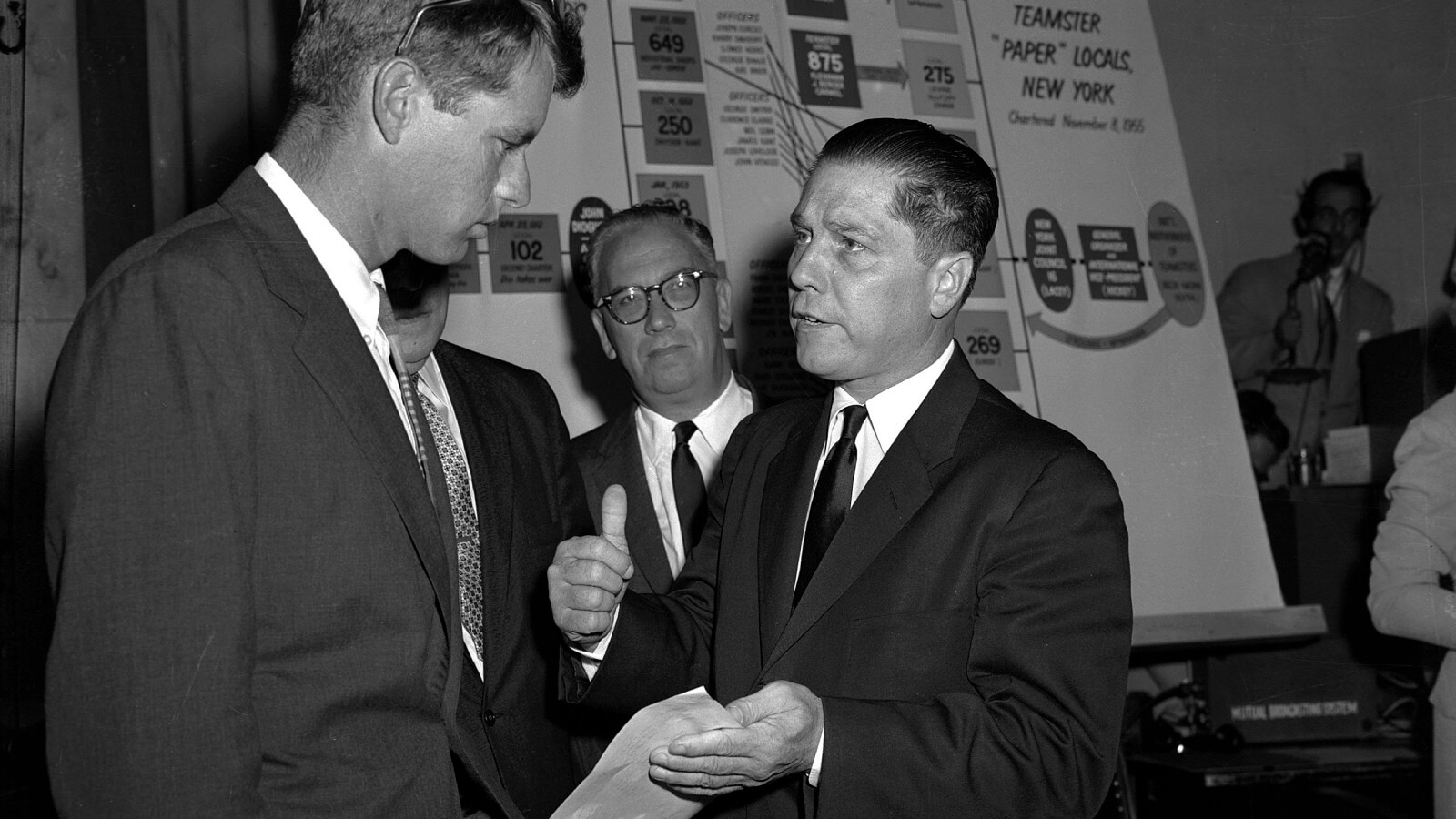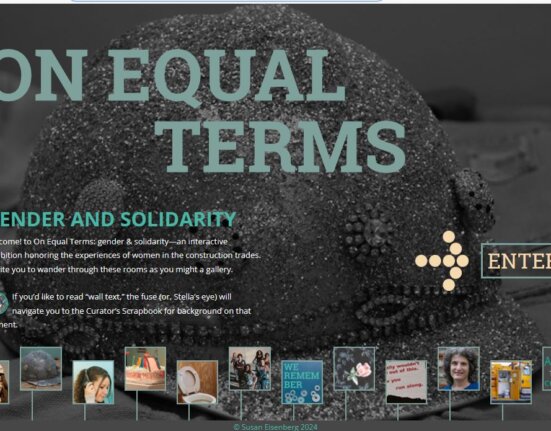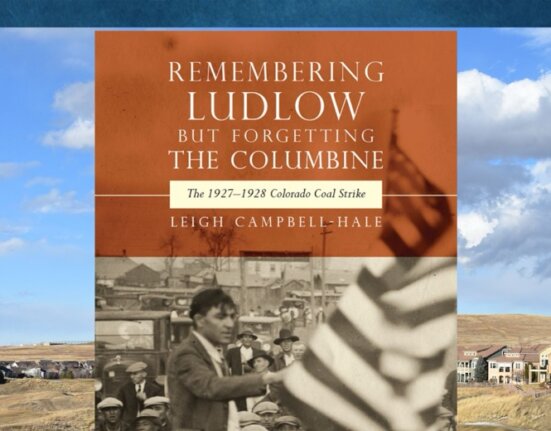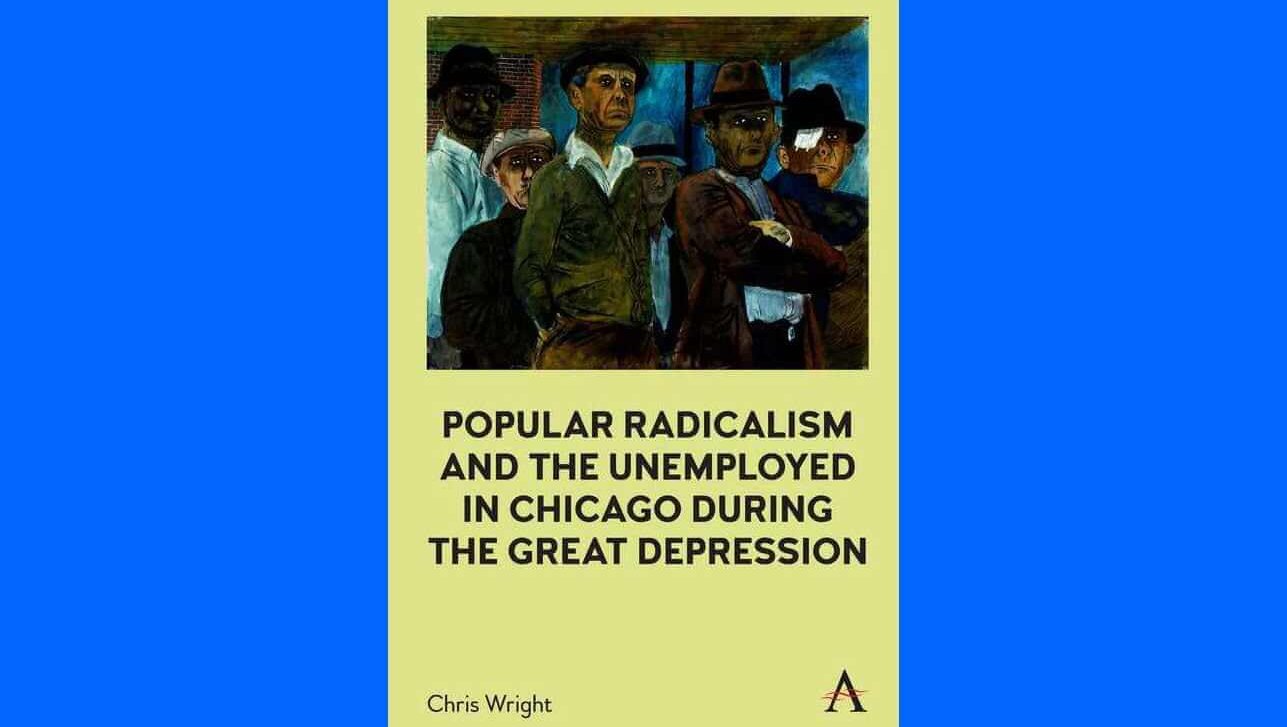Jimmy Hoffa used to say he’d be forgotten ten years after his death. This was an uncharacteristically unintelligent judgment. Forty-four years after his murder on July 30, 1975, Hoffa is still famous enough that one of the most celebrated movies of 2019, The Irishman, is about the man who claims to have killed him, Frank Sheeran. For a labor leader, such a level of fame is not only extraordinary; it is unique.[1]
Of course, the reasons for Hoffa’s fame are not entirely to his credit. He is seen as the dictatorial and corrupt union boss who was close friends with gangsters and allied his union, the International Brotherhood of Teamsters (IBT), with the Mafia. There is certainly some truth to these charges, as book after book has revealed.
However, on the occasion of the movie’s release, it is worth remembering that Hoffa was much more than just a corrupt “dictator.” More importantly, he was one of the most brilliant, effective and ambitious union leaders in American history, who played a substantial role in creating the postwar middle class. In fact, with the possible exception of John L. Lewis, he was probably the most popular labor leader of the 20th century: despite the political and media campaign to portray him as the devil incarnate, he was virtually worshiped by the large majority of Teamsters.
“When the government came after him,” a union member said years afterwards, “a lot of us wanted to take our trucks and run ’em over certain people… Everyone I knew thought Hoffa was a great man.” When he was released from prison in 1971 he was treated, according to an observer, “like the Messiah” by thousands of truck drivers who visited him, wrote letters to him, and accosted him in the street.
Why was he so beloved? For one thing, he was perceived as defiantly standing up for workers against a society that exploited them and would strip them of everything if it could. “The working man is being shortchanged every day in America,” Hoffa said regularly in interviews.
On the charges of corruption and ties to the Mafia, he was unrepentant: “Twenty years ago [i.e., in 1939] the employers had all the hoodlums working for them as strikebreakers. Now we’ve got a few, and everybody’s screaming.” Speaking to a television audience:
Now, when you talk about the question of hoodlums and gangsters, the first people that hire hoodlums and gangsters are employers. If there are any illegal forces in the community, he’ll use them, strong-arm and otherwise. And so if you’re going to stay in the business of organizing the unorganized, maintaining the union you have, then you better have a resistance.
Teamsters saw him as a courageous truth-teller, the very symbol of anti-establishment defiance in a relatively conformist, corporatist age.
But the main reason for his popularity was simply that he delivered for his members: more than anyone else, he was responsible for transforming the trucking industry from a decentralized, low-paying terribly unsafe business in the 1930s to a centralized, high-paying and relatively humane one in the 1960s. The contracts Hoffa negotiated were so generous there were stories of professors at elite universities quitting their jobs to become truck drivers because they could double their pay.
One of the secrets of his success was that he didn’t play by the rules: if businessmen could bribe politicians and the Mafia could bribe police departments, why couldn’t a union leader in a hostile, competitive environment use the same tactics?
By whatever means necessary, he would, and did, force employers to unionize their workforces, establish unusually generous health and pension funds, and in general treat their employees with some respect. In 1964 Hoffa even achieved the dream he had worked towards for 25 years: he negotiated a National Master Freight Agreement with employers across the country, a contract that secured virtually uniform wages for 450,000 drivers from coast to coast and north to south. At a time when most of the South had very low wages and was hardly unionized at all, this was an incredible—and unique—achievement.
Hoffa’s meteoric rise in the IBT, from a low-level organizer in 1935 to union president in 1957, wasn’t due only to his willingness to adopt the tactics of his enemies. He was an astonishingly capable and ambitious man. According to people who knew him, including employers, he had an “almost hypnotic” charisma, was a “master psychologist,” “the smartest guy I know,” “like an elephant with his memory—it’s beyond belief,” and expert in the minutiae of labor law. Famously, he worked 20-hour days 6 days a week.
At the same time, Hoffa was closer to the rank and file than any other national labor leader. In speeches, he regularly gave out his office number and asked that members call him at any hour of the day or night if they had problems. “As he walks down the street,” one observer wrote in 1964, “he often halts passing trucks for a moment’s discussion with a couple of members. When away from Washington, D.C., he takes time out to tour the local trucking terminals, where he jokes, wrestles, and swears with the workers.” Nothing was more apt to provoke his legendary temper than an aspersion cast on the dignity of the truck driver’s occupation.
The average Teamster saw Hoffa as one of them, utterly different from “pantywaist” elite liberal professionals like Hoffa’s nemesis Bobby Kennedy, and they loved him for it.
Hoffa did indeed break the law on many occasions (although the most lurid allegations, such as that he ordered murders, have never been proven). But the question remains, in a society that was full of corruption and law-breaking by countless businessmen and powerful officials—including Attorney General Bobby Kennedy, who used illegal wiretaps and electronic bugs to bring down his enemy—why was Hoffa singled out?
The answer is that organized labor itself was targeted, and Hoffa was significant as the head of the largest, most powerful and most politically independent union. The context is important: in the 1950s big business was conducting a colossal political, legal and public-relations campaign to beat back the left-liberalism spawned by the New Deal era. Historian Elizabeth Fones-Wolf argues that there was a “unity of purpose within much of the business community on…the necessity of halting the advance of the welfare state and of undermining the legitimacy and power of organized labor.”
What better way to accomplish this goal than to focus public attention on union corruption and ties to Mafia figures? It was immaterial that many politicians and “legitimate” businesses were no less connected to the Mafia. The Teamsters was one of the few unions that often supported Republican politicians, so Democrats were willing to go after it.
Already in 1950–51, Congress shined a light on allegedly corrupt unions through Senator Estes Kefauver’s Special Committee to Investigate Organized Crime in Interstate Commerce. In 1954, the award-winning film On the Waterfront further tarnished the reputation of organized labor. But it was Senator McClellan’s Select Committee on Improper Activities in the Labor and Management Field, from 1957–59, that posed the greatest threat to the Teamsters. With a young Bobby Kennedy as the chief counsel, the committee brought down corrupt Teamster president Dave Beck in 1957, which paved the way for the much more popular Hoffa to be elected in his place. But Hoffa was not so easy to catch.
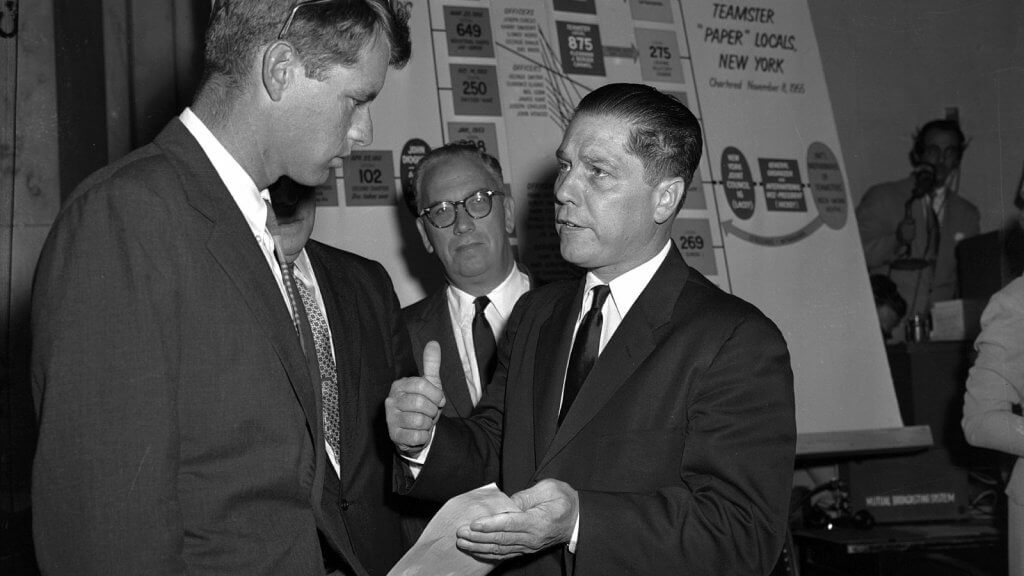
Again and again he was charged with crimes, from wiretapping to bribery to extortion, but nothing stuck. In 1960 the committee disbanded, but Bobby, infuriated that Hoffa had eluded his grasp, didn’t give up the fight. His brother John, elected president in 1960, appointed Bobby Attorney General in 1961, and until he resigned in 1964 his overriding obsession was to crush Hoffa. Further defeats followed, but finally in 1964 Hoffa was found guilty of jury-tampering and, in a separate trial, fraudulent use of the Teamster’s pension fund.
Hoffa’s appeals ran out in 1967, so he reported to prison, where he remained until Richard Nixon commuted his sentence in 1971. But a condition was attached to the commutation: he couldn’t engage in union activity until 1980. For a few years, therefore, he devoted his prodigious energy to prison reform—“Prison is hell on earth, only hell couldn’t be this bad”—organizing and speaking out about the matter whenever and wherever he could. In the end, though, contrary to the wishes of organized crime, he craved a return to power, a desire that got him killed in 1975.
With the iron-willed Hoffa out of the picture from 1967 on, the IBT grew more corrupt, established stronger ties to the Mafia, and became less accountable to its members. Rebel rank-and-file groups sprang up in the 1970s, most notably Teamsters for a Democratic Union, which is still a powerful force today. But as the economy, under attack from international competition, was deregulated in the 1970s and ’80s, trucking began to return to the hyper-competitive and insecure conditions of the 1930s.
Thus, the era in which a Hoffa could dominate an entire industry, including its employers, came to an end. Ultimately, that is the chief significance of Hoffa: he symbolizes a political economy long gone, a time when a union leader could strike fear and loathing in the hearts of senators and presidents, when the old industrial working class, millions strong and capable of bringing the economy to its knees if it so desired, was still the foundation of the social order. His departure from the scene, however adventitious, symbolized the departure of historical initiative from the working class. The age of neoliberalism began.
But the central lesson of Hoffa’s life remains relevant today: to build union power, leaders must be willing to ruthlessly confront employers, aggressively stand up for the material interests of members, and stay close to the rank and file. Be willing to antagonize the economic elite, because the power of organized labor is grounded in the working class, not in friendly relations with authorities.
In the current age of teacher revolts, the Fight for $15, and “democratic socialist” politics—an age in which the working class is finally reclaiming historical initiative—all unions should heed these lessons.
[1] A much longer version of this article is available here.

